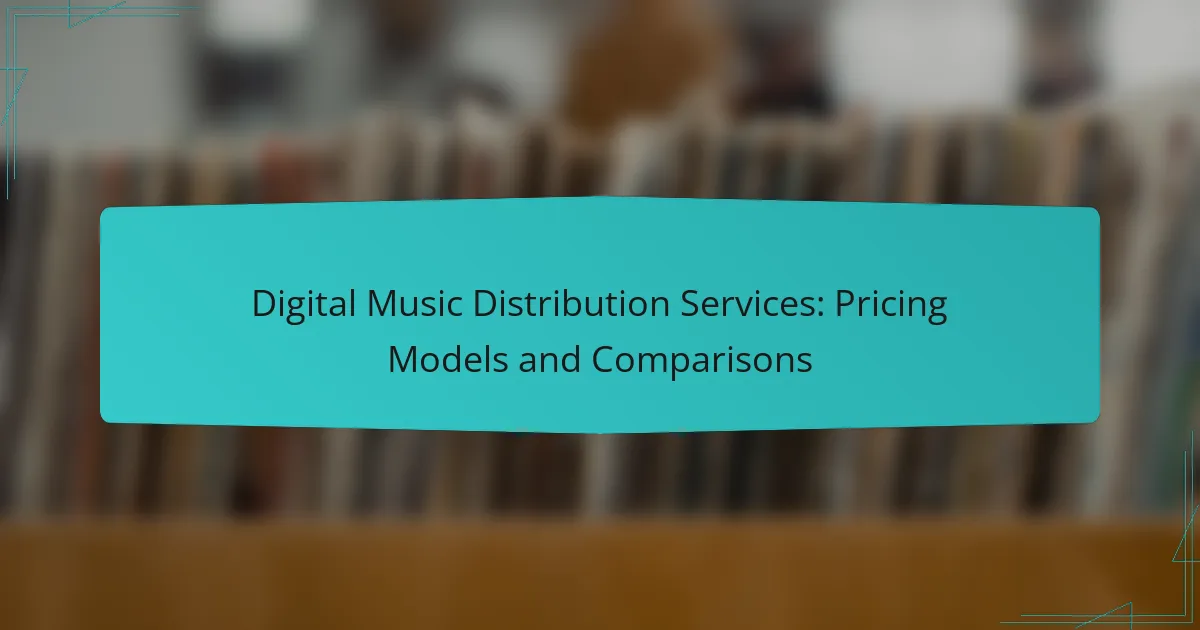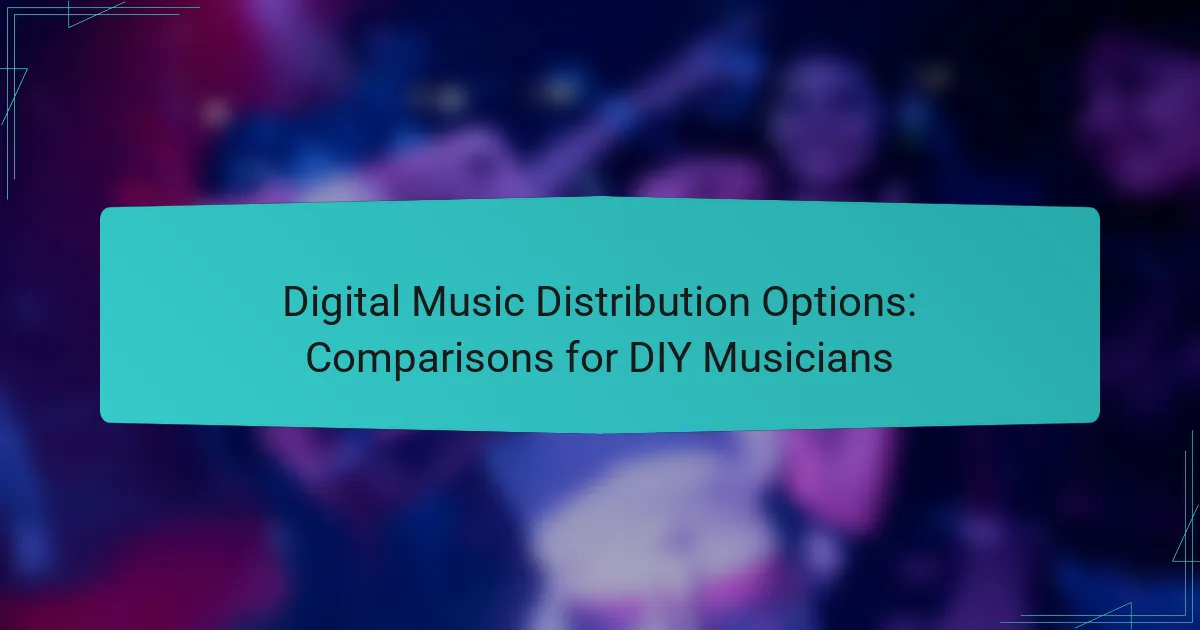For genre-specific artists, choosing the right digital music distribution platform is crucial for maximizing visibility and revenue. Platforms tailored to specific genres not only connect artists with their target audience but also offer unique features that cater to their artistic needs. Understanding the various pricing models available can help artists make informed decisions that align with their financial goals.
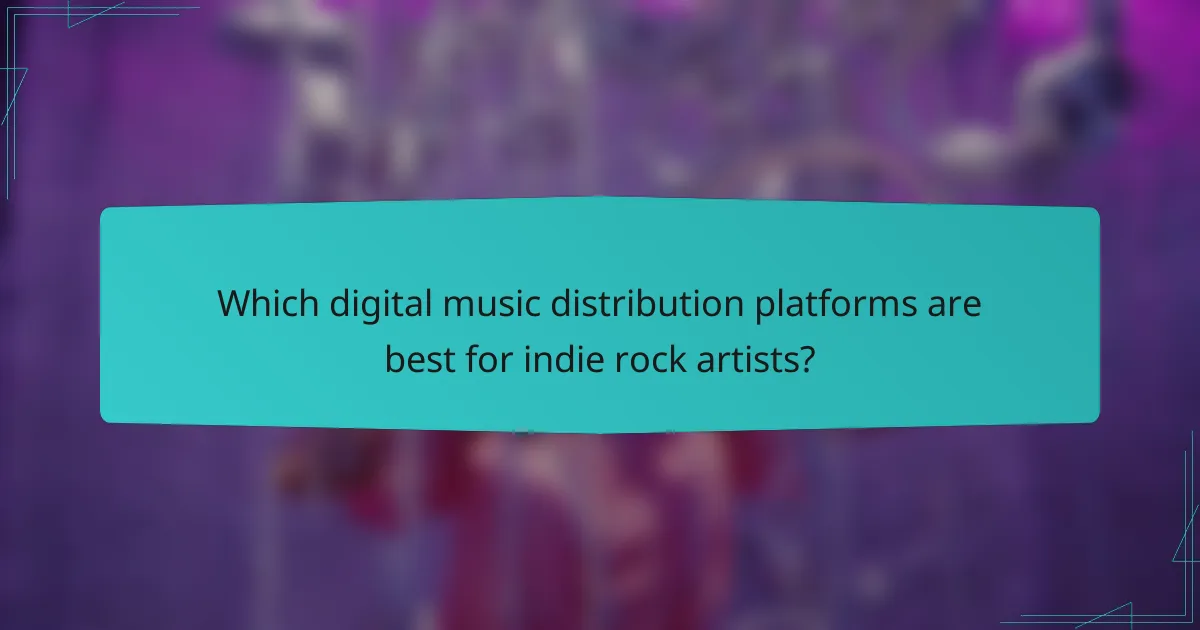
Which digital music distribution platforms are best for indie rock artists?
Indie rock artists can benefit from several digital music distribution platforms that cater specifically to their needs. The best choices often include platforms that offer flexibility, community engagement, and fair revenue sharing.
Bandcamp
Bandcamp is a popular choice for indie rock artists due to its artist-friendly model. It allows musicians to set their own prices and keep a significant portion of the revenue, often around 85% after payment processing fees.
Additionally, Bandcamp fosters a strong community, enabling artists to connect directly with fans through features like merchandise sales and exclusive content. This platform is particularly effective for building a loyal fanbase and generating direct support.
SoundCloud
SoundCloud is ideal for indie rock artists looking to share their music and engage with listeners. The platform offers a free tier, allowing artists to upload tracks and gain exposure without upfront costs.
With features like comments on specific track sections and the ability to share playlists, SoundCloud encourages interaction. However, monetization options may be limited unless artists upgrade to a Pro account, which comes with additional features and analytics.
DistroKid
DistroKid is a straightforward distribution service that allows indie rock artists to release their music across major streaming platforms like Spotify and Apple Music. For a flat annual fee, artists can upload unlimited tracks, making it a cost-effective option for prolific musicians.
One key advantage is the speed of distribution, often taking just a few days. However, artists should be aware that DistroKid takes a percentage of earnings from certain services, so reviewing the terms is essential.
CD Baby
CD Baby offers a comprehensive distribution service for indie rock artists, providing access to over 150 digital platforms. Artists pay a one-time fee per release, which includes services like physical distribution and sync licensing opportunities.
CD Baby is known for its robust support and resources for artists, including promotional tools and educational content. However, the upfront costs can be higher compared to subscription models, so budgeting is important.
RouteNote
RouteNote provides a flexible distribution model with both free and paid options, making it suitable for indie rock artists at various stages. The free plan allows artists to distribute music while sharing a portion of the revenue, while the paid plan offers 100% of earnings for a fee.
This platform is beneficial for artists who want to test the waters before committing financially. RouteNote also includes features for monetizing YouTube content, which can be an additional revenue stream for indie rock musicians.
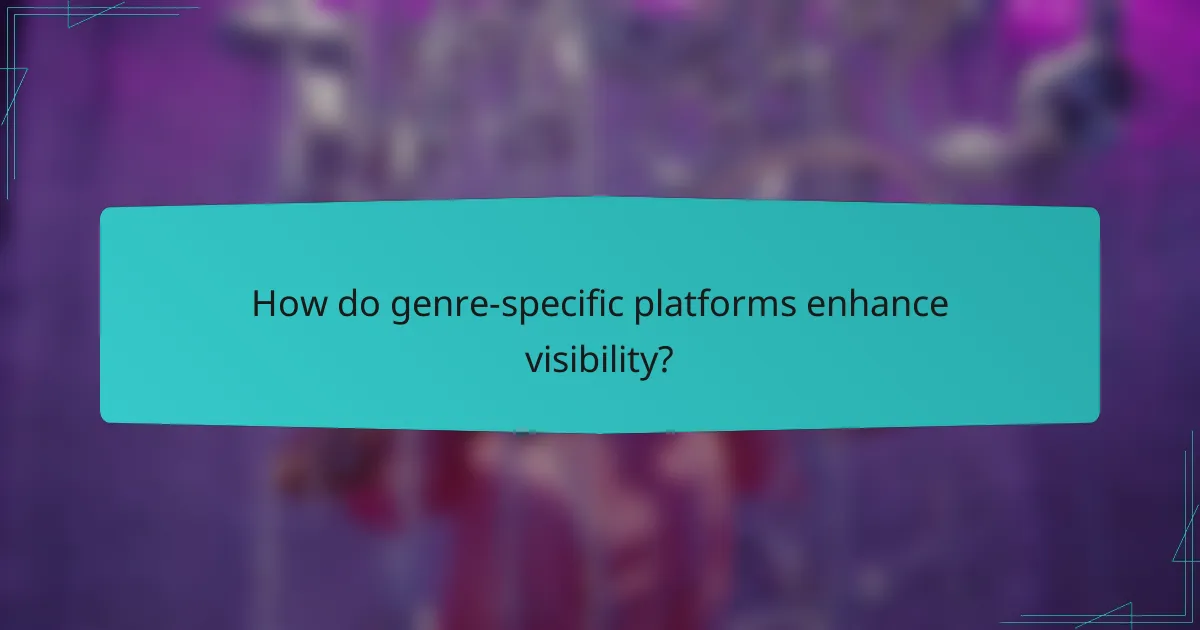
How do genre-specific platforms enhance visibility?
Genre-specific platforms enhance visibility by connecting artists directly with audiences who are actively seeking their type of music. These platforms focus on niche markets, allowing artists to stand out in a crowded digital landscape.
Targeted audience reach
Genre-specific platforms allow artists to reach audiences that are already interested in their music style. For example, a platform dedicated to electronic music can attract listeners who are passionate about that genre, increasing the likelihood of engagement and support.
Utilizing these platforms can lead to higher streaming numbers and better fan retention. Artists should consider promoting their music on multiple genre-focused sites to maximize their reach.
Curated playlists
Many genre-specific platforms feature curated playlists that highlight emerging and established artists within a particular genre. Being included in these playlists can significantly boost an artist’s exposure and credibility.
Artists should actively submit their tracks for playlist consideration, as inclusion can lead to increased streams and new fan discovery. Regularly engaging with curators can also foster relationships that may benefit future releases.
Community engagement
Genre-specific platforms often foster a sense of community among artists and fans, encouraging interaction and collaboration. This engagement can take the form of comments, shares, and social media interactions, creating a supportive environment for artists.
Participating in community events, such as virtual concerts or Q&A sessions, can further enhance an artist’s visibility and strengthen their fan base. Artists should prioritize building relationships within these communities to cultivate loyalty and support.

What are the pricing models for digital music distribution?
Digital music distribution platforms typically use three main pricing models: percentage of sales, flat fees, and subscription models. Each model has its own advantages and considerations, impacting how much artists earn from their music.
Percentage of sales
In this model, distributors take a percentage of the revenue generated from music sales and streams. This percentage can vary widely, often ranging from 10% to 30%, depending on the platform and services offered. Artists should carefully evaluate how these fees affect their overall earnings, especially if they have a large volume of sales.
For example, if an artist sells a track for $1 and the distributor takes 15%, the artist receives $0.85. This model can be beneficial for artists with fluctuating sales, as they only pay when they earn revenue.
Flat fees
Flat fee models charge artists a fixed amount for distribution, regardless of sales volume. This fee can be paid annually or per release, typically ranging from $10 to $50 for single releases or $100 to $300 for albums. Artists may prefer this model if they anticipate high sales, as they can keep all their earnings after the initial fee.
However, artists should consider whether the upfront cost aligns with their budget and expected sales. If sales are low, this model may not be cost-effective.
Subscription models
Subscription models require artists to pay a recurring fee, often monthly or annually, for ongoing distribution services. Fees can range from $5 to $30 per month, providing artists with unlimited releases during the subscription period. This model is appealing for artists who plan to release multiple tracks or albums regularly.
It’s important to assess the total cost over time, as frequent releases can lead to significant expenses. Artists should also ensure that the platform offers adequate support and features to justify the subscription fee.
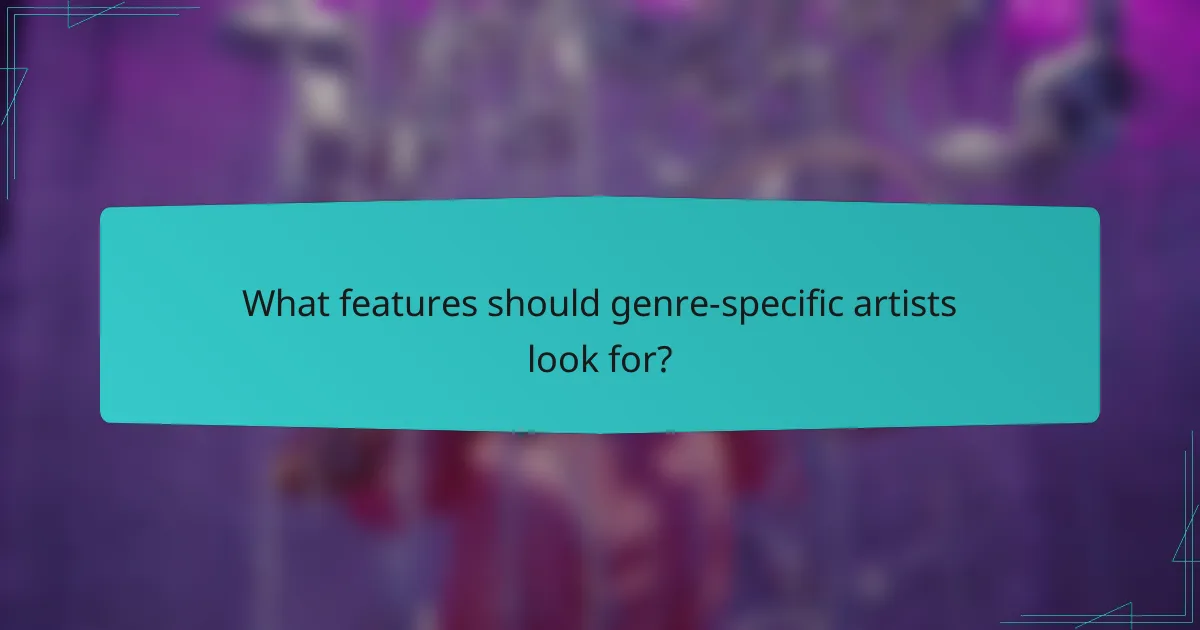
What features should genre-specific artists look for?
Genre-specific artists should prioritize platforms that cater to their unique needs, including tailored royalty rates, robust analytics tools, and effective social media integration. These features can significantly enhance their reach and revenue potential within their specific music genre.
Royalty rates
Royalty rates are crucial for genre-specific artists as they determine how much income can be generated from music sales and streams. Different platforms offer varying rates, often ranging from 15% to 50% of revenue, depending on the service and distribution model.
Artists should compare the royalty structures of platforms to find the best fit for their genre. For example, some platforms may offer higher rates for independent artists or specific genres, while others might have more favorable terms for mainstream music.
Analytics tools
Analytics tools provide genre-specific artists with insights into their audience and performance metrics. Effective platforms offer detailed reports on streams, downloads, and listener demographics, which can help artists tailor their marketing strategies.
Look for platforms that provide real-time data and easy-to-understand visualizations. This information can guide decisions on touring, merchandise, and promotional efforts, ultimately enhancing an artist’s engagement with their fan base.
Social media integration
Social media integration is essential for genre-specific artists to promote their music and connect with fans. Platforms that allow seamless sharing of music and updates across social networks can significantly boost visibility and engagement.
Choose a distribution service that offers built-in social media tools or easy linking options. This can include features like pre-save campaigns on Spotify or direct sharing buttons for platforms like Instagram and Facebook, which are vital for reaching genre-focused audiences.
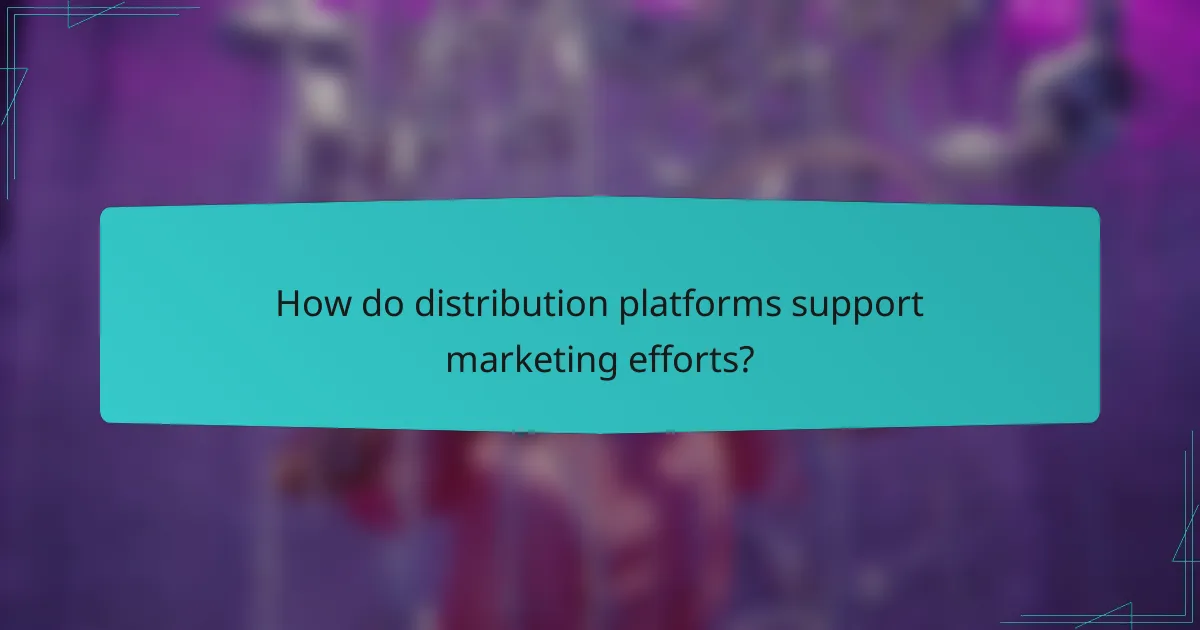
How do distribution platforms support marketing efforts?
Distribution platforms enhance marketing efforts by providing artists with tools to promote their music effectively. These platforms often include features that facilitate outreach, audience engagement, and brand building.
Promotional tools
Many distribution platforms offer built-in promotional tools that help artists reach their target audience. Features like pre-save campaigns, landing pages, and promotional links can significantly boost visibility. For example, a pre-save campaign allows fans to save a new release before it drops, increasing initial streaming numbers.
Artists should choose platforms that provide customizable promotional options to align with their branding. Utilizing these tools can lead to higher engagement rates and a stronger connection with listeners.
Email marketing
Email marketing remains a powerful strategy for artists to connect with their audience. Distribution platforms often integrate email marketing features, allowing artists to send newsletters and updates directly to fans. This can include announcements about new releases, upcoming shows, or exclusive content.
To maximize effectiveness, artists should segment their email lists based on listener preferences and engagement levels. Regularly updating subscribers with relevant content can help maintain interest and encourage loyalty.
Social media campaigns
Social media campaigns are essential for promoting music in today’s digital landscape. Many distribution platforms provide tools to create and manage social media ads, helping artists target specific demographics. For instance, platforms may offer analytics to track the performance of posts and ads, allowing for data-driven adjustments.
Artists should leverage social media to share behind-the-scenes content, engage with fans, and promote new releases. Consistency in posting and interaction can significantly enhance an artist’s online presence and drive traffic to their music.
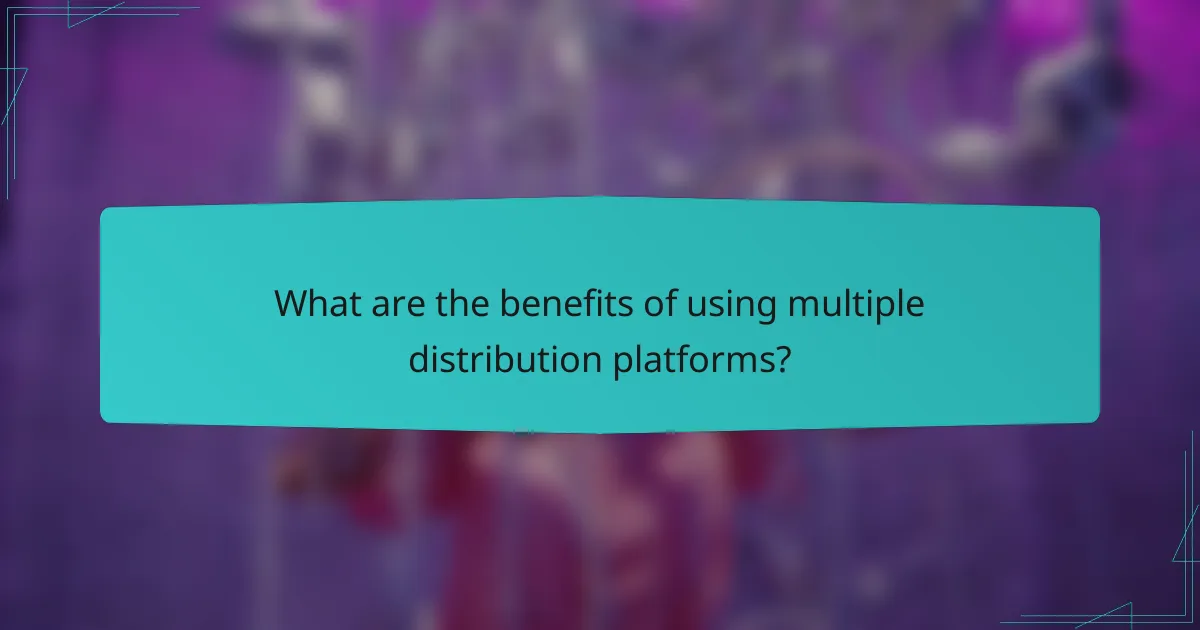
What are the benefits of using multiple distribution platforms?
Using multiple distribution platforms allows artists to maximize their exposure and reach diverse audiences. By leveraging various services, musicians can cater to different listener preferences and increase their chances of being discovered.
Wider audience reach
Distributing music across multiple platforms significantly broadens an artist’s audience reach. Each platform attracts different user demographics, so being present on services like Spotify, Apple Music, and Bandcamp can help tap into various listener bases.
For instance, while Spotify is popular among mainstream listeners, Bandcamp may attract dedicated fans of niche genres. This diversification can lead to increased streams, downloads, and fan engagement, ultimately boosting an artist’s visibility.
To effectively manage this, artists should research which platforms are most frequented by their target audience. Regularly analyzing listener data can help refine distribution strategies and ensure that music reaches the right ears.

